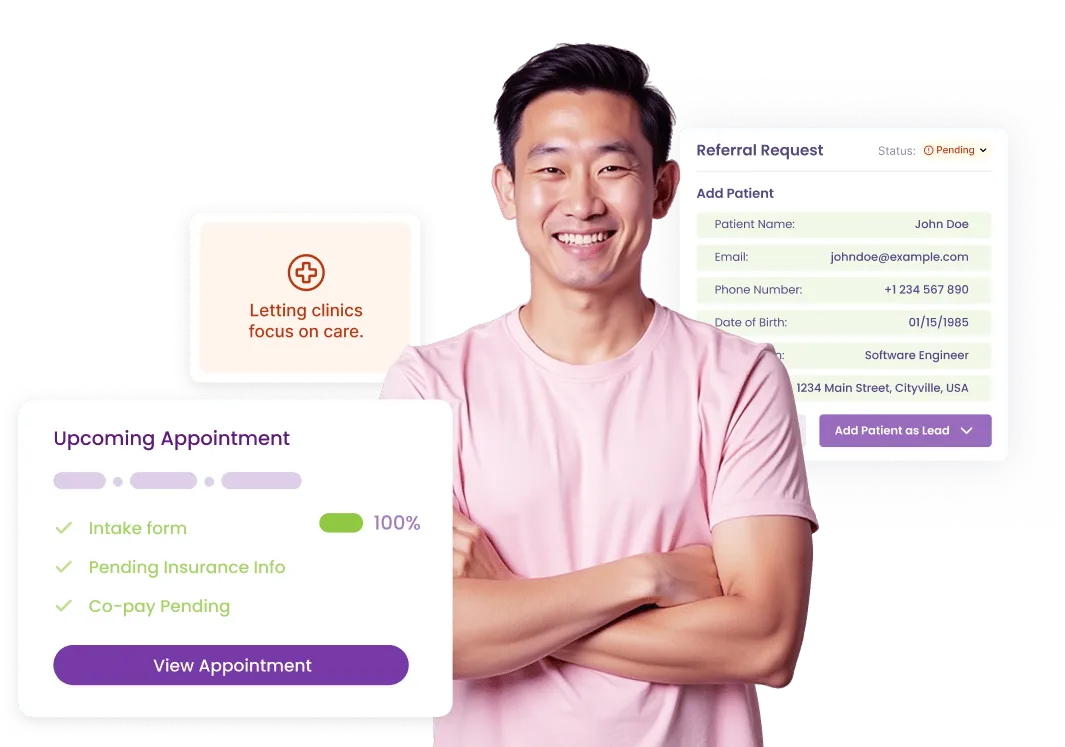90849 – Psychotherapy Service
CPT code 90849 represents a distinct mental or behavioral health service, including evaluation, therapy, or care coordination.
What is CPT
90849
?
90849 is a specific CPT code utilized for the billing of psychotherapy services, particularly in contexts involving individual therapy sessions. This entry provides a comprehensive overview of the clinical applications, documentation requirements, and payer considerations associated with this code. It is essential for providers to ensure that clinical notes not only align with evidence-based interventions but also explicitly outline treatment goals, the interventions applied, and measurable patient progress. When utilizing time-based codes, it is critical to accurately document the start and stop times of sessions to substantiate the duration billed. This practice not only aids in compliance but also enhances the overall integrity of the clinical documentation process.

Documentation Tips
When billing for time-based psychotherapy, it is imperative to document the exact start and stop times for each session. This practice not only supports the billed duration but also fosters transparency in clinical practice. The documentation should include the specific therapeutic modality employed (e.g., Cognitive Behavioral Therapy, Dialectical Behavior Therapy), the assessment instruments utilized, the clinical focus of the session, the patient's response to interventions, and a detailed plan for future follow-up. For sessions utilizing scored instruments, maintain copies of all completed tools in the patient's file. In the context of telehealth, ensure to document patient consent for remote services along with the technology platform employed. For optimal audit readiness, it is advisable to consistently use structured formats such as SOAP (Subjective, Objective, Assessment, Plan) or DAP (Data, Assessment, Plan) for your notes.

At a Glance
- Service Type: Psychotherapy
- Use Case: Individual Therapy
- Typical Setting: Outpatient clinic or telehealth, depending on payer policy
- Billing Unit: Per session / per instrument (may vary based on specific service rendered)
- Common Pairings: 90791 (initial assessments), 96127 (brief cognitive assessment), and other psychotherapy codes
Billing Examples
In practice, a clinician may conduct a focused therapy session using Cognitive Behavioral Therapy (CBT) techniques to address a patient's panic symptoms. During the session, the clinician documents specific interventions, the patient's responses, and progress towards established treatment goals. If the session lasts for 50 minutes, the clinician would appropriately bill using the time-based psychotherapy code that accurately reflects the actual face-to-face time spent with the patient. Additionally, if a patient presents with co-occurring disorders, the clinician may employ a combination of therapeutic techniques to address multiple issues. In such cases, it is crucial to document the time spent on each issue and the rationale for the interventions selected.
Compliance Guidelines
- Before billing, verify payer coverage and authorization requirements to avoid claim denials.
- Ensure that the documentation reflects medical necessity, linking the services provided to the appropriate ICD-10 diagnoses.
- Utilize correct modifiers, such as 95 for telehealth services, as mandated by payer guidelines.
- Avoid upcoding; select the appropriate code that accurately matches the documented time and service level delivered.
- Conduct periodic audits of clinical documentation to minimize claim denials and enhance the quality of documentation.
Common ICD-10 Codes
Helpful links for mental health billing and documentation
- F32.0 (Major depressive disorder, single episode, mild)
- F41.1 (Generalized anxiety disorder)
- F33.1 (Major depressive disorder, recurrent episode, mild)
- F43.10 (Post-traumatic stress disorder, unspecified)
- F41.9 (Anxiety disorder, unspecified)
- F34.1 (Dysthymic disorder)
Additional Resources
Helpful links for mental health billing and documentation
Related CPT Codes
Helpful links for mental health billing and documentation
Got questions? We’ve got answers.
Need more help? Reach out to us.
Q1: What is the primary purpose of this code?
A: The 90849 code is utilized for psychotherapy sessions that align with its specific definition. It is essential that all documentation supports the billed service comprehensively.
Q2: Is this code applicable for telehealth services?
A: Yes, many payers allow billing for telehealth services under this code, provided the service is synchronous and all required modifiers and patient consent are properly documented. Always check individual payer policies for specific requirements.
Q3: What types of documentation may payers request for this code?
A: Payers often request documentation that includes the time spent in session, the specific therapeutic techniques or assessment instruments utilized, the patient's responses, and a clear linkage to a covered ICD-10 diagnosis.
Q4: Can this code be billed in conjunction with other services?
A: Yes, when billing multiple services, it is crucial to document the distinct time and rationale for each service. Consider using add-on codes or adhering to E/M separation rules where applicable to justify the billing.
Q5: What are some common reasons for claim denials associated with this code?
A: Common denial reasons include missing documentation of time spent, lack of medical necessity, incorrect application of modifiers, or billing beyond specified frequency limits for the services rendered.

